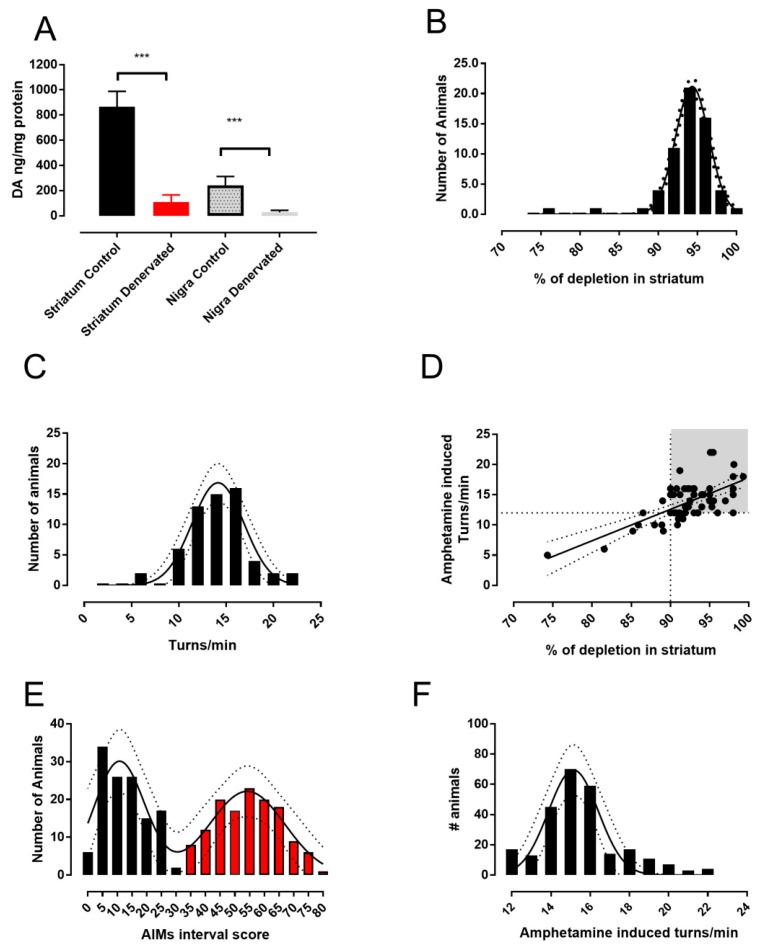Figure 1.
A single uniform 6-OHDA-lesioned population of rats produced two populations with low and high dyskinetic scores during L-DOPA treatment. (A) The effect is shown of 6-OH dopamine injected into the MFB on striatal and nigral dopamine content in the ipsilateral and the contralateral sides 17 days after the lesion (mean ± SD). (B) The population distribution of the percentage of striatal depletion. (C) The population distribution of this set of animals grouped by ipsilateral turns/min induced by a single dose of amphetamine (10 mgrs/kg i.p.) 16 days after the lesion. (D) The relationship of the percentage of dopamine depletion vs. amphetamine-induced circling of this set of animals. (E) The population distribution of a set of 260 animals selected for the amphetamine challenge with more than 12 turns/min and treated with L-DOPA 10 mgrs/kg i.p. over 20 days, grouped with their AIMs scores. Black bars indicate population one, corresponding to low scores, and red bars corresponding to the second population, corresponding to high scores. (F) The population distribution of this same set of 260 animals grouped by ipsilateral turns/min induced by a single dose of amphetamine (10 mgrs/kg i.p.) 16 days after the lesion. Note: ***p < 0.001 with respect to control side.

